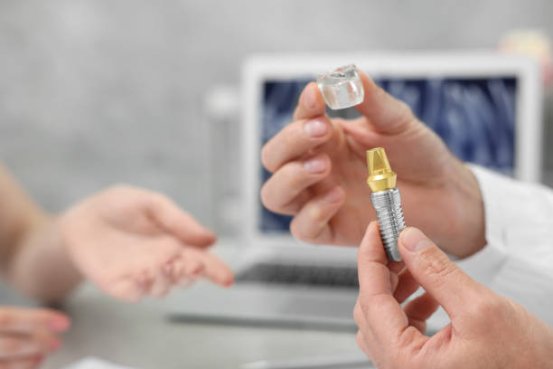Australia’s dental implant field is witnessing a major innovation with the arrival of screwless implant systems. These advanced alternatives provide patients with a more efficient and comfortable option compared to traditional screw-retained implants. By addressing many of the complications associated with conventional methods, screwless technology delivers the same reliable, aesthetic, and durable results while making the overall treatment process more straightforward.

What Are Screwless Dental Implants?
Screwless implants represent a step forward in modern implant dentistry by moving away from screw-retained designs. Standard implants usually consist of three parts: the implant fixture embedded in the jawbone, the abutment connecting the fixture to the crown, and the crown itself, which is commonly secured by a small screw. In contrast, screwless systems use advanced connection techniques such as friction-fit designs, Morse tapers, or magnetic attachments to hold the prosthetic securely in place.
The innovation lies in the connection mechanism. Instead of relying on screws that may loosen, screwless systems use precision engineering to create durable bonds. Eliminating screw access holes improves both aesthetics and structural strength, which is particularly valuable for implants placed in the visible front teeth. The outcome is a seamless integration that more closely replicates the natural appearance of real teeth.
How Does the Screwless Implant Procedure Work?
The surgical steps of screwless implants are similar to traditional implants but differ during restoration. The implant body is surgically inserted into the jawbone at the correct position and angle. After a healing phase of several months, osseointegration occurs, where the implant fuses with surrounding bone.
At the restoration stage, instead of attaching a screw-retained abutment, dentists use specially designed connectors that secure by mechanisms such as:
-
Friction-fit tapering that locks components into place
-
Morse taper systems where parts bond tightly when pressed together
-
Locking mechanisms that work without screws
The crown is then fixed to this abutment with cement or other bonding techniques—or, in some systems, by direct connection. This simplified process often requires fewer parts and less chairside adjustment, leading to quicker treatment and enhanced cosmetic results.
Key Benefits of Screwless Implant Technology
Screwless dental implants offer multiple advantages:
-
Improved aesthetics: No screw access holes means more natural-looking restorations, especially important for front teeth.
-
Reduced complications: They avoid common problems such as screw loosening, minimizing the need for maintenance visits.
-
Biomechanical efficiency: These systems distribute biting forces more evenly across bone and implant, lowering stress and risk of bone loss.
-
Fewer components: With simpler designs, there are fewer weak points where failures might occur.
-
Enhanced comfort and hygiene: Patients avoid the metallic sensation sometimes linked to screw systems, and the absence of access channels reduces areas where bacteria can accumulate.
Candidate Suitability for Screwless Implants
The best candidates are individuals in good oral and overall health, with enough bone density and volume to support implants. These systems are especially suitable for patients requiring implants in highly visible areas, where aesthetics matter most.
Patients who have experienced screw loosening or prosthetic instability with conventional implants may benefit from screwless designs. Likewise, those seeking lower long-term maintenance may find the simplified structure more appealing.
However, limitations exist. Severe bone loss may still require grafting. Patients with medical conditions affecting bone healing (such as uncontrolled diabetes or those undergoing jaw radiation therapy) need special evaluation. Heavy smokers also face higher complication risks, regardless of implant type. A consultation with a dental implant specialist is essential to determine suitability.
Cost of Screwless Dental Implants in Australia
The price of screwless implants in Australia depends on the system, practitioner expertise, location, and whether procedures like bone grafting are needed. These innovative systems usually cost more than traditional implants.
| Treatment Type | Average Price Range (AUD) | What’s Included |
| Single Screwless Implant | $3,500 - $6,500 | Implant, abutment, crown, consultations |
| Multiple Screwless Implants (per tooth) | $3,200 - $5,800 | Discounts for multiple placements |
| Full Arch Solution | $20,000 - $35,000 | Complete restoration of one arch |
| Bone Grafting (if required) | $500 - $3,000 | For insufficient bone volume |
Private health funds often cover part of the cost, usually $500–$1,500 per implant, though this varies widely. Some clinics provide installment plans to make treatments more affordable, and in certain cases, early access to superannuation may be possible to help cover dental expenses.
While the upfront investment is higher, long-term savings may result from fewer complications and reduced maintenance, making screwless implants a cost-effective solution over time.
Final Thoughts
Screwless implants represent one of the most important advances in implant dentistry, offering Australians improved aesthetics, superior functionality, and potentially better long-term outcomes. Though they require a greater financial commitment, their advantages—such as reduced maintenance, enhanced comfort, and better biomechanics—make them a highly attractive choice in modern tooth replacement options.
This content is intended for informational purposes only and does not substitute professional medical advice. Patients should consult a qualified dental specialist for personalized recommendations.
